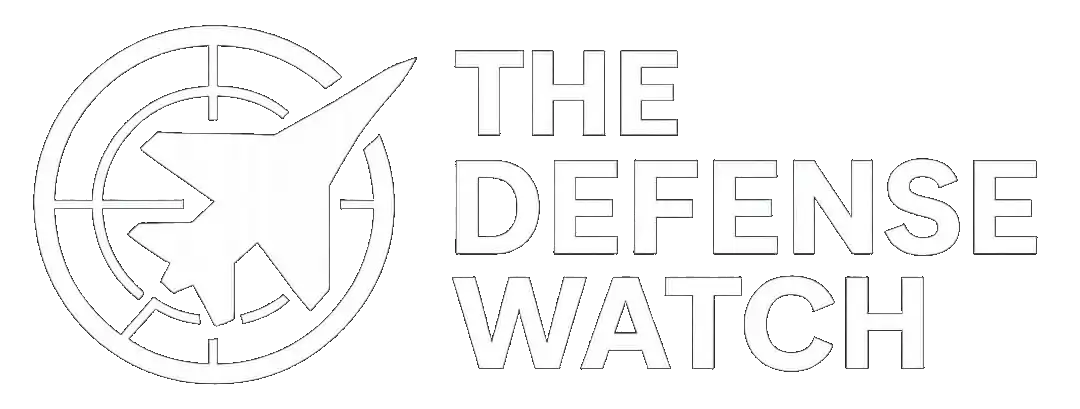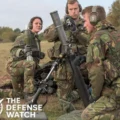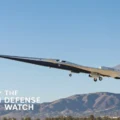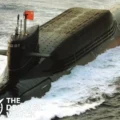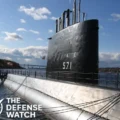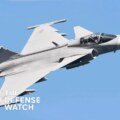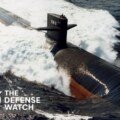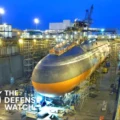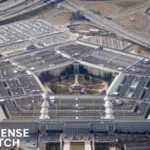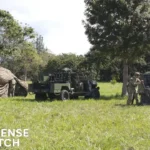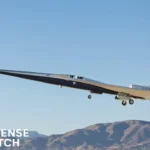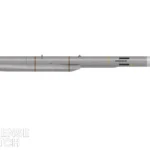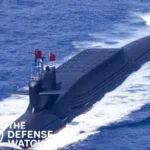- Home
- Catalog
- Compare
- F/A-18 Super Hornet vs Rafale: 10 Key Differences Between Two Advanced Fighter Jets
F/A-18 Super Hornet vs Rafale: 10 Key Differences Between Two Advanced Fighter Jets
The F/A-18E/F Super Hornet and the Dassault Rafale represent two of the most capable 4.5-generation multirole fighters in active service today. While both jets were designed to excel in air superiority and ground attack roles, their design philosophies, operational doctrines, and technological integrations differ significantly.
Developed by Boeing for the U.S. Navy, the Super Hornet is a rugged, carrier-based strike fighter emphasizing reliability and versatility. In contrast, France’s Dassault Rafale—developed by Dassault Aviation—is a highly agile, twin-engine multirole platform optimized for both land-based and carrier operations, integrating advanced avionics and electronic warfare systems.
Below are the 10 key differences that define these two modern fighters.
1. Design and Airframe Philosophy
The F/A-18 Super Hornet’s airframe prioritizes durability for carrier operations, featuring folding wings and reinforced landing gear. The Rafale, while carrier-capable in its “M” variant, was designed primarily for flexibility and aerodynamic agility. The Rafale’s delta wing and canard configuration provide exceptional maneuverability, while the Super Hornet’s conventional design offers stability and ease of maintenance.
2. Engines and Performance
The Super Hornet uses two General Electric F414-GE-400 turbofan engines, each generating 22,000 lbf of thrust. The Rafale employs two Snecma M88-2 engines, each producing about 17,000 lbf. Despite lower thrust, Rafale’s lighter airframe allows superior thrust-to-weight performance, enabling better acceleration and agility.
3. Speed and Range
Rafale reaches a top speed of Mach 1.8, compared to the Super Hornet’s Mach 1.6. In terms of combat radius, Rafale holds the advantage with approximately 1,000 km, while the Super Hornet’s typical strike radius is around 720 km, although aerial refueling extends both aircraft’s operational reach.
4. Avionics and Cockpit Systems
The Rafale integrates the Thales RBE2-AA AESA radar, a fully digital glass cockpit with a wide-angle holographic HUD, and voice control capability. The Super Hornet’s AN/APG-79 AESA radar is known for reliability and long-range target tracking. Both jets feature advanced situational awareness systems, but Rafale’s avionics suite emphasizes sensor fusion and pilot workload reduction.
5. Weapons and Payload Capacity
The Super Hornet can carry up to 8,000 kg of external payload across 11 hardpoints, including AIM-120 AMRAAMs, JDAMs, and AGM-84 Harpoons. The Rafale carries 9,500 kg across 14 hardpoints, including Meteor, MICA, and SCALP missiles. While the Super Hornet’s weapon integration is optimized for U.S. and allied munitions, Rafale supports a broader range of European systems.
6. Stealth and Signature Management
Neither aircraft is a stealth fighter, but both employ reduced radar cross-section (RCS) design. The Super Hornet features radar-absorbent coatings and edge alignment techniques, while Rafale’s smoother contours and composite materials contribute to lower RCS—giving Rafale a slight edge in radar signature reduction.
7. Electronic Warfare Capabilities
Rafale’s SPECTRA suite (Système de Protection et d’Évitement des Conduites de Tir du Rafale) is one of the most advanced EW systems in service, offering 360-degree threat detection and jamming. The Super Hornet’s ALQ-214 IDECM system is robust, particularly in carrier-based strike missions, but the Rafale’s SPECTRA provides superior threat analysis and self-defense automation.
8. Multirole Flexibility
Both aircraft are true multirole platforms. However, Rafale’s “Omnirole” design allows seamless transition between air-to-air and air-to-ground missions within the same sortie. The Super Hornet, while flexible, often requires pre-mission configuration changes.
9. Carrier Operations
The Super Hornet is purpose-built for U.S. Navy carrier decks, featuring a rugged airframe, tailhook, and catapult compatibility. Rafale M, the naval version, serves aboard France’s Charles de Gaulle carrier but is more limited in deployment numbers. Super Hornet’s carrier readiness and U.S. Navy integration give it operational maturity in maritime environments.
10. Operational Users and Combat Record
The F/A-18 Super Hornet is flown by the U.S. Navy, Australia, and Kuwait, with extensive combat history in Iraq, Syria, and Afghanistan. Rafale serves with France, India, Egypt, Greece, and Qatar, seeing action in Libya, Mali, and Ukraine-related missions. Both have proven reliability, but Rafale’s export success in recent years highlights its adaptability and international appeal.
Comparative Summary and Analysis
In operational context, the F/A-18 Super Hornet excels in maritime strike, electronic warfare (especially in its EA-18G Growler variant), and cost-effective maintenance. The Dassault Rafale, on the other hand, offers superior agility, advanced avionics, and flexibility across mission profiles—from nuclear deterrence to close air support.
Defense analysts often describe the Super Hornet as a carrier-based workhorse, while Rafale is a technological multirole performer with extensive export traction.
For nations evaluating future airpower investments, the choice between the two often depends on strategic alliances, logistical compatibility, and defense industrial partnerships rather than sheer performance metrics.
FAQs
Rafale is faster, with a top speed of Mach 1.8 compared to the Super Hornet’s Mach 1.6.
The Rafale’s SPECTRA suite provides broader EW coverage and automation, giving it an edge.
Yes, though the U.S. Navy plans to phase it out after 2030 as next-generation platforms like NGAD emerge.
Rafale has gained more export customers in recent years due to flexible weapon integration and European partnerships.

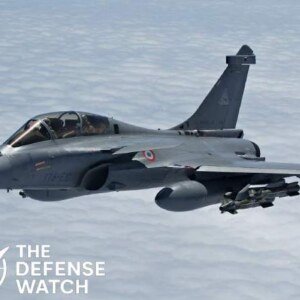
|
|
| Price | |
| Our Rating | |
| Brand | Boeing Defense Dassault Aviation |
| Category | Fighter Jets Fighter Jets |
General Information
| Name | F/A-18E/F Super Hornet Dassault Rafale |
| Manufacturer | Boeing Defense, Space & Security Dassault Aviation |
| Country of Origin | United States France |
| Type / Role | Carrier-based Multirole Fighter Multirole Fighter |
| Generation | 4.5th 4.5 |
| Status | In active service In service |
| First Flight | November 29, 1995 July 4, 1986 |
| Introduction / In Service Since | 1999 2001 |
| Number Built | Over 600 units 240+ |
| Operators | U.S. Navy, Royal Australian Air Force France, India, Egypt, Qatar, Greece, Indonesia |
Dimensions & Structure
| Length | 60.3 ft (18.5 m) 15.27 m |
| Wingspan | 44.9 ft (13.6 m) 10.9 m |
| Height | 16 ft (4.9 m) 5.3 m |
| Wing Area | 500 sq ft (46.5 m²) 45.7 m² |
| Empty Weight | 32,081 lb (14,552 kg) 10,600 kg |
| Maximum Takeoff Weight (MTOW) | 66,000 lb (29,937 kg) 24,500 kg |
| Internal Weapons Bay | None None |
| External Hardpoints | 11 14 |
Performance
| Maximum Speed | Mach 1.8 Mach 1.8 (2,223 km/h) |
| Range | 1,275 nm (2,346 km) 3,700 km |
| Combat Radius | 390 nm (722 km) 1,000–1,850 km |
| Service Ceiling | 50,000 ft (15,240 m) 50,000 ft |
| Rate of Climb | 44,882 ft/min 305 m/s |
| Thrust-to-Weight Ratio | 0.93 1.13 |
| G Limits | +7.5 / -3.0 +9 / -3.6 |
Powerplant
| Engine Type | Afterburning Turbofan Snecma M88-2 Turbofan |
| No. of Engines | 2 2 |
| Thrust (each) | 22,000 lbf 16,500 lbf |
| Thrust Vectoring | No No |
| Fuel Capacity | 14,400 lb (internal) 4,700 kg (internal) |
Armament
| Gun | 1× M61A2 20mm Vulcan GIAT 30mm cannon |
| Missiles (Air-to-Air) | AIM-9X, AIM-120 AMRAAM MICA, Meteor |
| Missiles (Air-to-Ground) | AGM-84 Harpoon, AGM-88 HARM SCALP-EG, AM39 Exocet |
| Bombs | JDAM, Paveway, Mk 83/84 Paveway, AASM |
| Hardpoints | 11 14 |
| Payload Capacity | 9,920 kg (21,900 lb) 9,500 kg |
Avionics & Systems
| Radar | AN/APG-79 AESA Thales RBE2 AESA |
| Radar Range | 150+ km 200+ km |
| Electronic Warfare (EW) System | AN/ALQ-214 IDECM SPECTRA Suite |
| Targeting System | ATFLIR pod Thales Damocles / TALIOS Pod |
| Helmet Display | JHMCS Integrated HMD |
| Navigation | GPS/INS GPS/INS |
| Autopilot / AI Assistance | Advanced Flight Control System Semi-Automated |
| Communication | Secure data link, Link 16 Secure Datalink, SATCOM |
Stealth & Technology
| Radar Cross Section (RCS) | Reduced (~1 m² class) ~1 m² |
| Stealth Features | Radar-absorbent materials, shaping Radar-absorbent materials |
| Infrared Signature Reduction | Moderate Yes |
| Sensor Fusion | Partial Full |
| Networking Capabilities | NIFC-CA compatible NATO-compatible datalink |
Variants
| Special Export Versions | Australia (F/A-18F) Rafale EH/IH (India), Rafale EM/QM (Egypt/Qatar) |
Operational History
| Major Conflicts / Deployments | Iraq, Afghanistan, Syria, Libya Libya, Mali, Iraq, Syria |
| Notable Operators | U.S. Navy, Australia France, India, Egypt |
| Combat Proven? | Yes Yes |
| Mission Types | Air superiority, strike, SEAD, maritime patrol Air superiority, strike, reconnaissance, deterrence |
Cost & Program
| Unit Cost | ~$70–80 million (Block III) $85–115 million |
| Development Cost | ~$5 billion ~$45 billion |
| Program Name | F/A-18E/F Super Hornet Program Rafale Program |
| Funding Countries | United States, Australia France |
Additional Information
| Upgrades Planned | Block III digital cockpit, network enhancements F4 & F5 standard upgrades |
| Future Replacement | F/A-XX (Next Generation Air Dominance) Next-Gen Fighter (FCAS) |
| Export Restrictions | U.S. ITAR-controlled Minimal (case-by-case) |
| Notable Achievements | Over two decades of carrier dominance Combat-proven multirole success |
| Competitors | Rafale M, F-35C, MiG-29K Eurofighter Typhoon, F/A-18E/F, Gripen E |


|
Disclaimer Note
The information provided on TheDefenseWatch.com is for general informational purposes only. While we strive to ensure the accuracy, completeness, and timeliness of our content regarding defense and aerospace products, technologies, and specifications, we cannot guarantee that all information is 100% accurate or up-to-date due to the evolving nature of military technology and classified data. TheDefenseWatch.com does not warrant the reliability, suitability, or availability of the information for any specific purpose. Users are advised to consult official sources, such as manufacturers, government publications, or defense agencies, for precise and verified data before making decisions based on our content. We are not affiliated with any defense manufacturers, governments, or military organizations mentioned. Opinions, reviews, and ratings reflect expert analysis but are subjective and should not be considered endorsements. TheDefenseWatch.com is not responsible for any errors, omissions, or consequences arising from the use of this website’s content. External links are provided for convenience and do not imply endorsement. TheDefenseWatch.com reserves the right to update or modify content without prior notice. By using this website, you agree to our Privacy & Cookies Policy.
